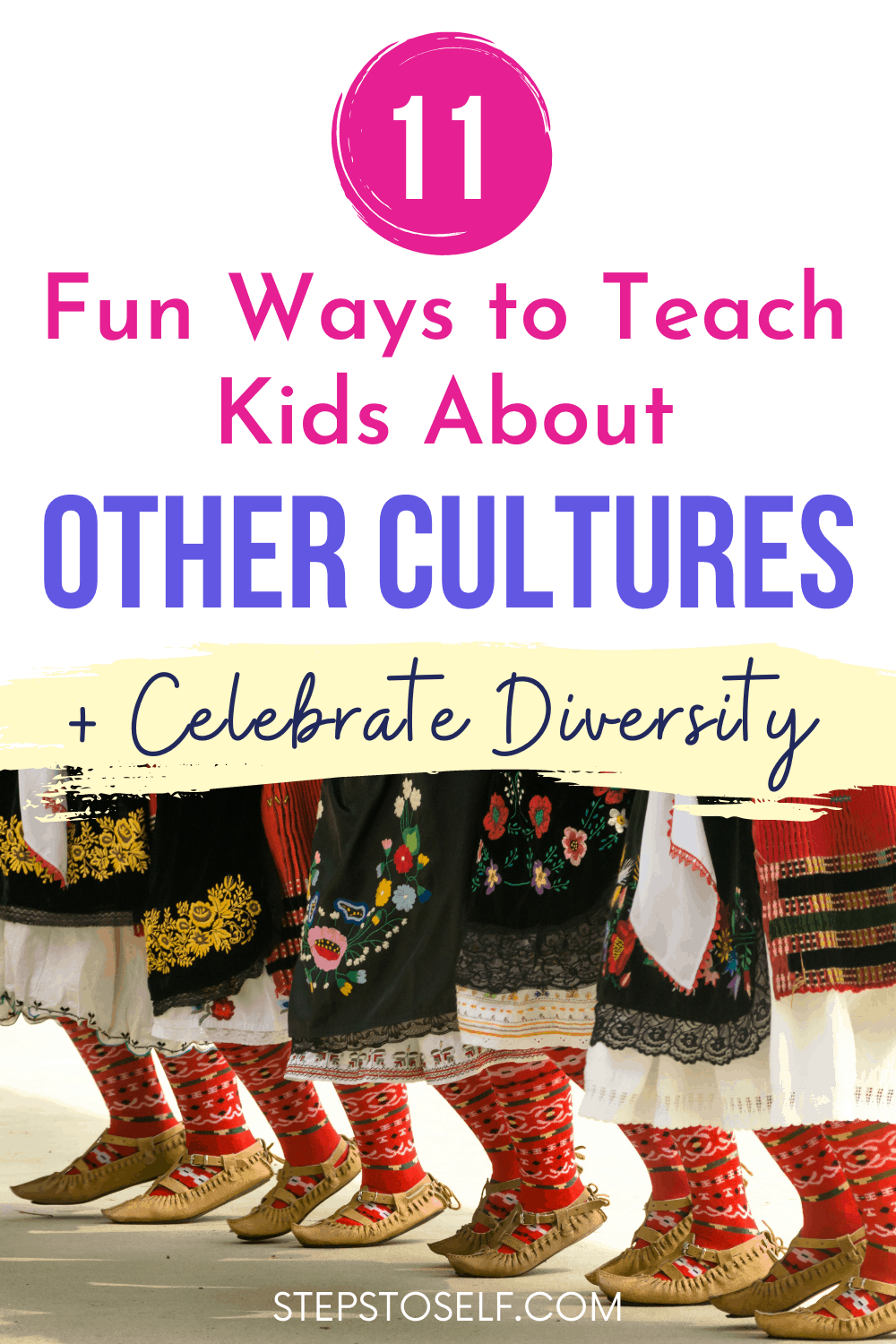Learning about other cultures is a great way to teach children to appreciate the diversity of our human world. By recognizing and celebrating our differences, you can help raise a kind child who respects others and makes them feel welcomed and valued.
Educating children about other cultures is one way to fight against racism and other forms of bias. The more diversity kids are exposed to from a young age, the better.
As a young child, I found it fascinating to learn about other cultures. These included cultures from my own heritage, cultures of my friends, and cultures from around the world. It can be a lot of fun!
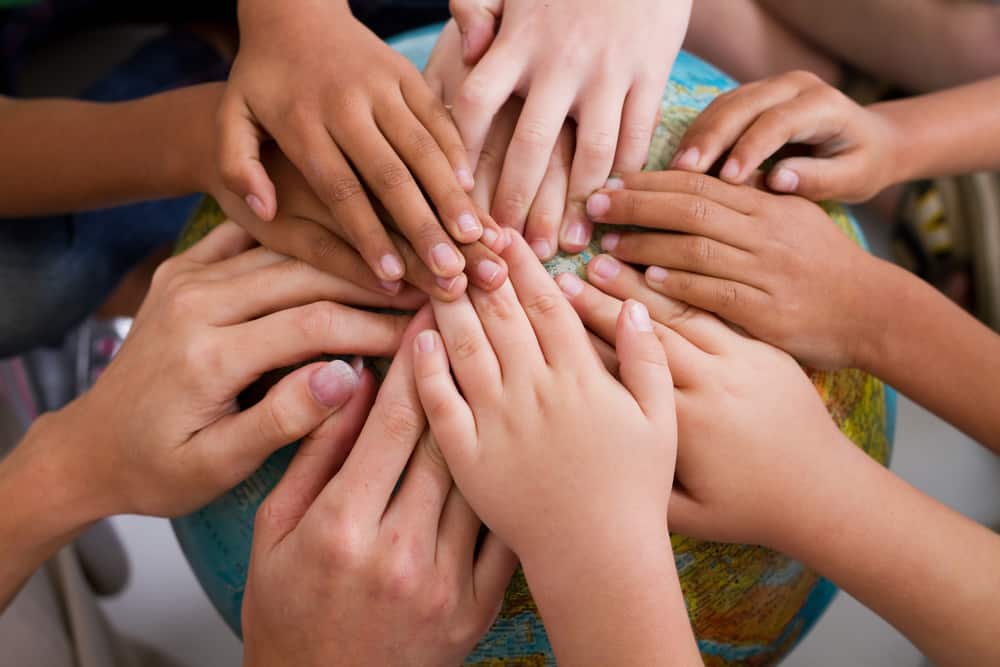
As an adult, I believe it’s our differences that make us most interesting. Learning about other cultures can help kids better understand different points of view. It can even reduce bullying.
Don’t just leave this education up to the schools. According to the National Association for the Education of Young Children, “families are the primary context for children’s development and learning.” This means you play an important role.
Learning about the world and the fascinating people in it can be a great gift to your child.
Make choosing to be colorblind and culture-blind a way of the past. Instead, show your child how to appreciate special qualities in others. Make diversity part of your family conversation.
Learning how to teach your child about different cultures is a great way to start. In this post, I’m sharing 11 fun ways you can help your child explore global cultures. You might try having an international week or weekend at home.
I hope you enjoy these activities together, and I’m certain you’ll learn something new yourself too!
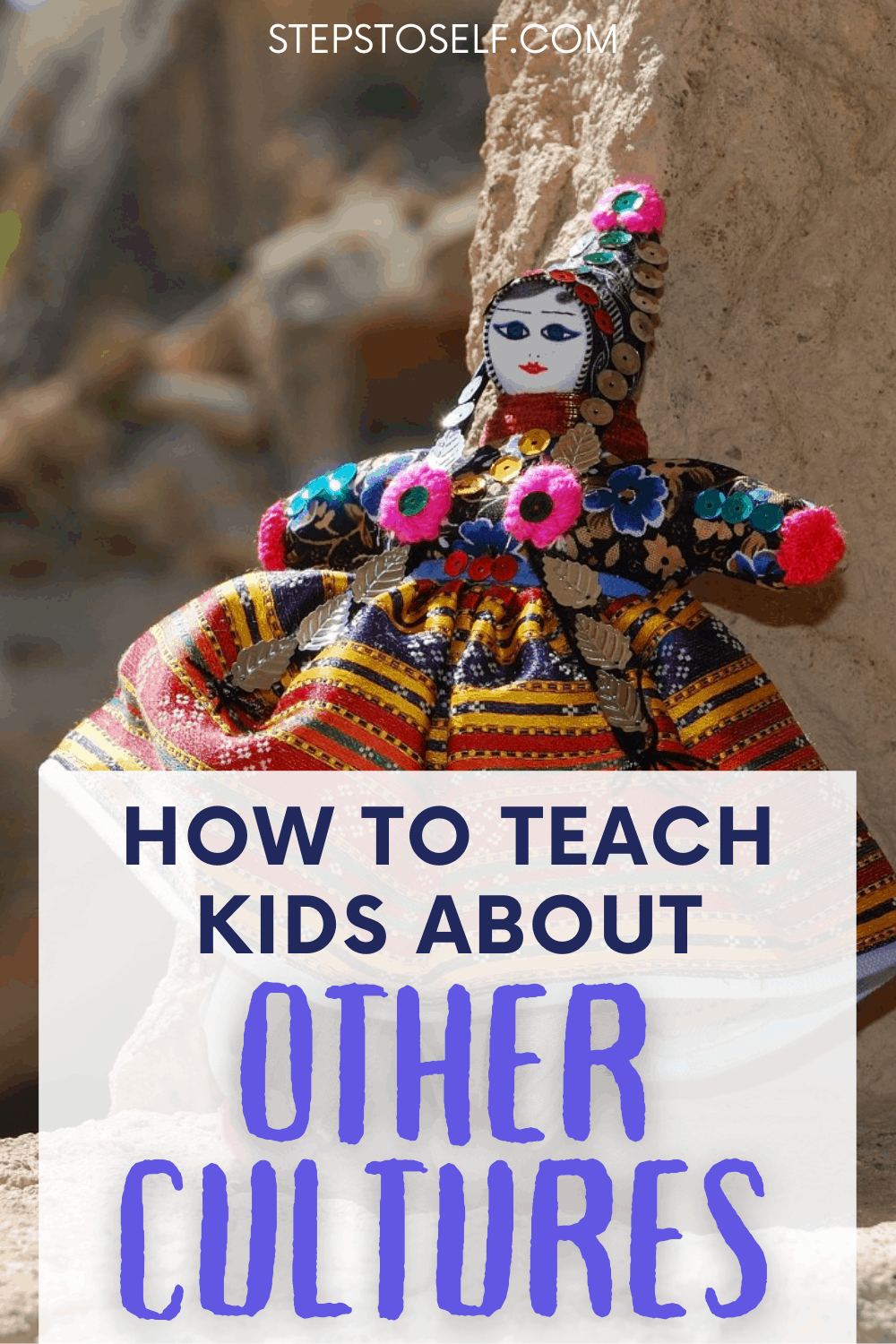
How to Teach Your Child About Different Cultures
When it comes to choosing cultures to explore, you can use a variety of approaches. You certainly might want to delve into your family’s own cultural background.
A child should know about their own cultural identity.
It’s also important to learn about completely unfamiliar cultures. You might start with someone your child knows or looks up to and try to learn more about their culture.
You can ask your child if there’s a culture they’ve been curious about. You could also pick a culture that has been in the news recently.
For a sense of adventure, you can spin a globe or the wheel of random countries to select a random culture to research. Once you’ve selected a culture, you’re ready to get to the fun activities!
1. Prepare a Food to Try
Food is near and dear to all our hearts, and it is closely linked to culture. Each culture has special flavors and dishes that make it unique.
Why not use your taste buds to explore another culture? Your child can learn about new ingredients and why they are used.
If your child is old enough, they can help research the recipes. Then, you can cook something new together and give it a try.
You can also cook your way through a global cookbook for kids, trying a new recipe each week.
You might even discover a new favorite for the regular meal rotation.
If you have friends or neighbors of a different cultural background, you could each prepare some traditional dishes and then have a meal together. Making memories with real people can be even more fun than exploring other cultures on your own.
Some cultures also have a different way of eating, such as with their hands or chopsticks, which can be interesting to learn about.
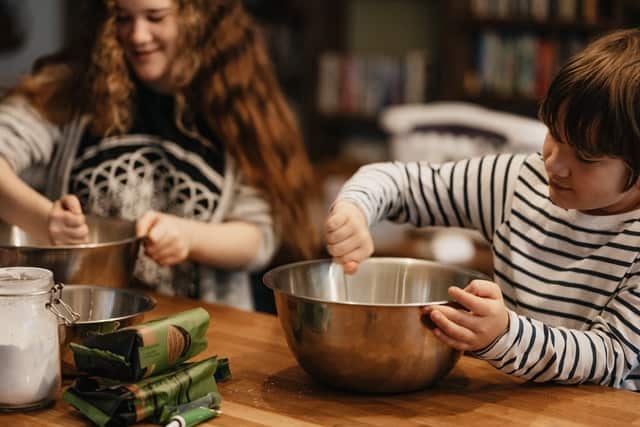
2. Learn Some of a Different Language
Other languages can be so fascinating. With the internet at your fingertips, it’s easy to learn some phrases in another language.
Google Translate can translate between English and over 100 other languages. You can even listen to the correct pronunciations.
Try to find out the culture’s customary greetings as a starting point. The words for “please” and “thank you” are always helpful to know.
If the culture uses different characters, see if your child can research how their name would be spelled.
Can you notice any similarities between the other language and your own primary language?
How many people speak the primary language of this culture? Does the culture have multiple languages?
Let your child give the family a lesson about what they learned.
3. Find Out About a New Holiday
Kids love finding out about new and different holidays. Discover what holidays are important or unique to the culture you’re exploring together.
What kind of festivities are traditionally held for the holiday? Is there special food, music, decorations, etc.?
Ask your child what they think would be neat about celebrating this holiday. How is it similar or different from any of your child’s favorite holidays?
Your child might want to color a picture of the holiday celebration or look at some real photos or video of people celebrating the holiday online. They could make a pretend greeting card for the holiday.
In the spirit of unique cultural celebrations, if your child could invent their own holiday, what would it be?
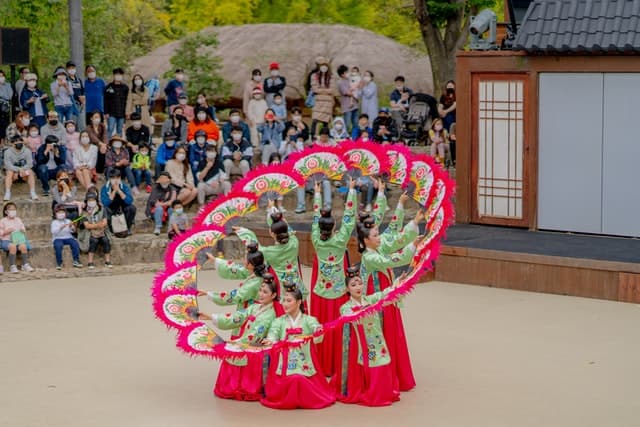
4. Discover a Custom
Aside from holiday celebrations, cultures have other customs that make them special. These customs are a big part of what makes each culture distinct.
For example, in America, we walk on the right side, we shake hands as a greeting, and we high five in celebration. They are practically automatic behaviors because we learn them from our culture at an early age.
What patterns of behavior are practiced by the culture your child is learning about? How do people say hello or show respect?
How are children given their names? Learn about the differences and similarities between the culture’s customs and your own.
You are bound to discover something new and interesting. For instance, according to some culture’s food customs, burping is a high form of flattery.
Customs and the history behind them can be quite fascinating.
5. Listen to Traditional Music
Music is a great way for children to learn, plus it can be a lot of fun. Sing, clap, and dance along to songs from other cultures together.
You can play international songs in the car or during playtime. It will give you a chance to talk about different instruments, styles of music, and where the music comes from.
Join the celebration at home with your own instruments, like shaker eggs, if you have some.
What do the people sing about? Is there some history behind the music? Songs can be great conversation starters.
Exposing your child to musical arts from other cultures can help open their mind to our diverse world.
The Little Songbird website has over 100 songs in foreign languages available. You can also search for songs on YouTube.
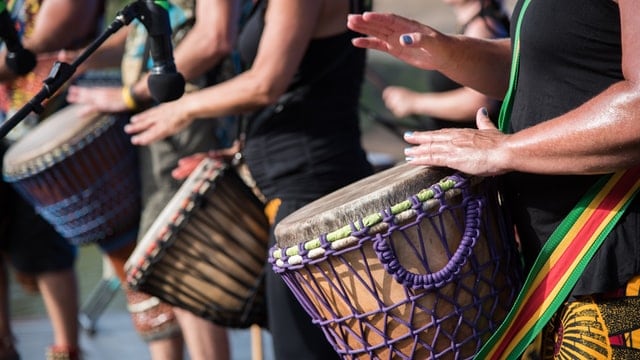
6. Learn About a Role Model
There are so many more amazing people in the world than we have time to study in school. Follow something that your child is interested in and see if you can find a role model to learn about from another culture.
It could be an athlete, a scientist, an artist, a writer, an astronaut, or a Nobel Peace Prize winner. There are so many people to look up to around the world and from history.
These amazing individuals bring their own unique perspectives and talents. It’s great for a child to see how people from diverse backgrounds can contribute to society in a big way and serve as examples for others.
7. Find the Country or Region on a Map
Our world is truly an amazing place, and it gives home to billions of people from thousands of different cultures. Help your child understand this by locating the country or region for their culture of interest on a map.
How far away is this place? What is the weather and nature like there? Look at some pictures and talk about what it might be like to live in such a place.
Are there any special landmarks related to that culture? What might you want to see if you were visiting? Your child can take a virtual visit to a new area of the globe.

8. Make a Photo Collage
Seeing real photos of people from another culture is so important for children. Often, images children see in the media, such as movies, may be stereotyped or incorrect.
Or, your child may not have been exposed to people of this other culture at all. Their world is only so big at their young age.
Help your child collect photos of people from this culture living their life. You can make a collage digitally or on a poster board.
It’s a great opportunity to talk about differences in skin tones, hair type, etc. Your child already notices these differences, and you can show them it’s OK to speak about them.
Let them ask questions and use the opportunity to explain how we don’t need to be afraid or look down on differences. They’re part of our humanity and what makes each of us special!
9. Write to a Pen Pal
Did you ever have a pen pal as a kid? What a great way for kids to be able to connect with a child from another culture. They can share things about their own life and learn about a different culture in return.
Your child can ask their own questions and gain knowledge from a first-hand source. It’s certainly more real than looking things up on the internet.
Plus, they’ll be able to practice the lost art of writing handwritten letters. It can be so fun for them to receive a letter in the mailbox.
Websites that can help with pen pal connections include Kids for Peace and International Pen Friends.
10. Make a Craft of Traditional Clothing or Designs
Many cultures have traditional colors, designs, and clothing. You can design a craft around learning about these aspects of a culture. What do the colors, patterns, and imagery mean to the people of that culture?
Your child could color in a color-by-number design that you create to reveal a traditional pattern. Use paint, markers, colored pencils, or crayons—whatever you prefer. If they like drawing, they could draw some of the clothing or designs.
Another option is to make play “clothing” by cutting pieces of colored felt for flat felt dolls. Felt is easy to trim and glue together. It’s a no-sew craft.
Your child could also do a cross stitch of a traditional design. There are many patterns available online. Or, you could do a sewing craft together to make traditional doll clothing.
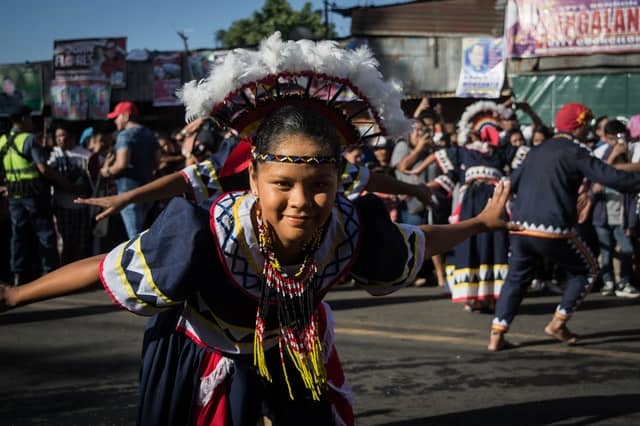
11. Read or Listen to a Story
Aside from cultural music, learning about other cultures through story is probably my favorite. Reading with children is just so much fun.
International children’s books are a great option, with colorful pages and images to delight. You can also listen to recordings of folk stories.
Passing stories down from generation to generation is how many cultures keep alive their shared values, customs, and beliefs. It’s a time-honored tradition.
There can be a lot of meaning behind the characters and events.
You can check out your local library or find many options online, such as:
- Anansi the Spider: A Tale from the Ashanti
- Why Mosquitoes Buzz in People’s Ears: A West African Tale
- Arrow to the Sun: A Pueblo Indian Tale
- Raven: A Trickster Tale from the Pacific Northwest
- Yeh-Shen: A Cinderella Story from China
There are also more general books about diversity and acceptance that you can explore:
- Shades of People (A book for ages 2-5 with real pictures of kids with different skin colors)
- The Color of Us (A positive book about skin color for kids age 4-8)
- The Sneetches (A collection of Dr. Seuss stories with messages about diversity)
- Whoever You Are (A book about similarities and differences of children around the word for ages 4-7)
Have Fun Learning About Other Cultures
These are just a few of the ways you can have fun and teach your child about diverse cultures. I hope you found something that inspires you to spend time together and expand your horizons.
Also check out 35 best family bonding activities
Teaching diversity shouldn’t be left up to the classroom alone. Make talking about different backgrounds, cultural practices, religious beliefs, and racial differences part of your conversation at home.
This includes talking about your own cultural identity.
Aside from the activities we reviewed, some other memorable ways to learn about other cultures include traveling to other places, visiting museums, attending a cultural event, and going to cultural festivals.
You could even try organizing your own local international festival at your child’s school, if they do not hold one already.
Thank you for stopping by to find out how to teach your child about different cultures through fun activities. Now go and explore!
